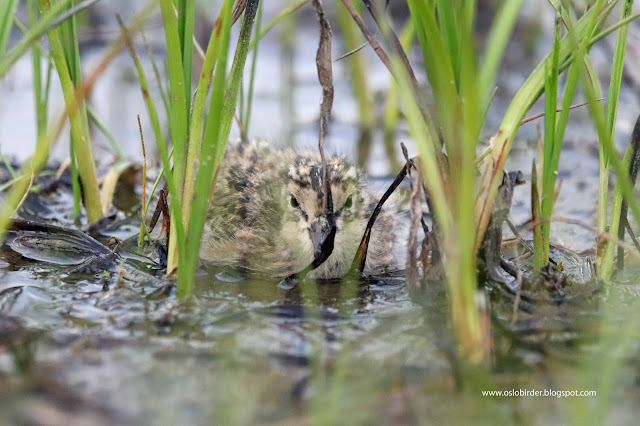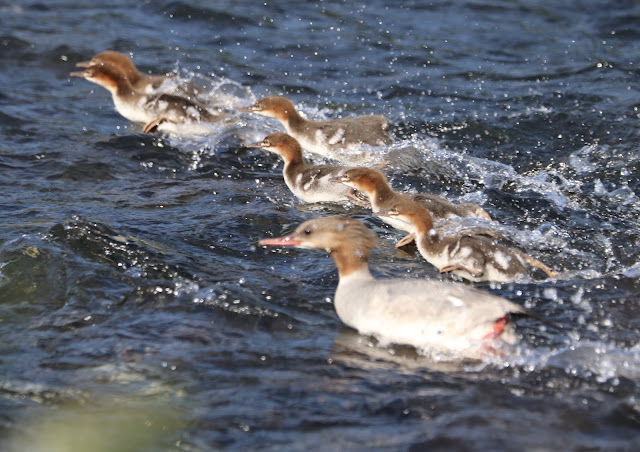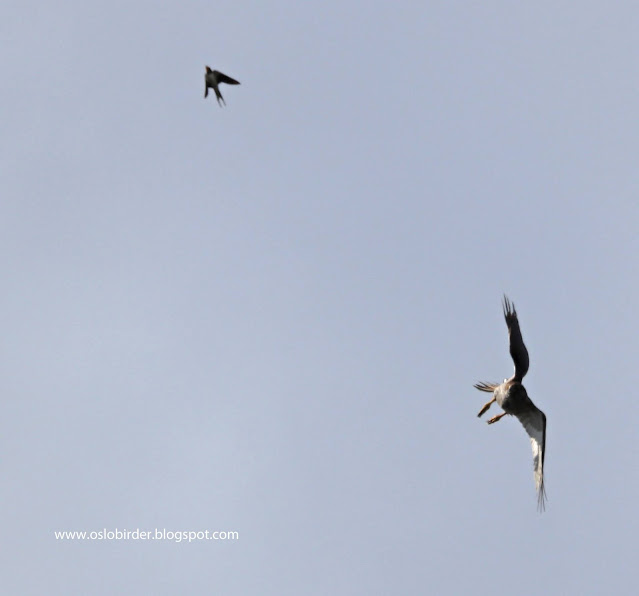Circumstances this year have conspired such that I
am not able to travel to our cabin north of the Arctic Circle near Bodø. And
this after a solid 9 year run. This is a real highlight of every year and
birding wise had resulted in my two best finds ever (Asian White-winged Scoter
and Pied-billed Grebe).
Every cloud, silver lining and all that though it
does mean that I am able to discover the bird and perhaps most interestingly
the insect life of Oslo in July which I have missed out on before. Birding wise
it has allowed me to follow up on some exciting, if not rare, breeding birds
which I will have a long post on later in the year. Insect wise I was of course
hoping to find some interesting butterflies or dragonflies. I hoped to see
Poplar Admiral (ospesommerfugl) and White-letter Hairstreak (almestjertvinge)
but have not succeeded so far.
It has been very good conditions for butterflies
though and I have seen a lot of species with fritillaries with 8 species in
Maridalen being all I could hope for with only the exception of Queen of Spain
(sølvkåpe) which it is still early for. A moth stole the show though with a
huge Bedstraw Hawk-moth (mauresvermer) having me initially thinking I was
watching a dragonfly as it buzzed past me. Luckily it stopped to nectar on
thistles for a couple of minutes and despite having the Beast with me I got
some nice shots.
Another silver lining has been able to watch
football and TdF on the big screen rather than on a phone as is the norm at the
cabin 😊.
 |
| Bedstraw Hawk.moth (mauresvermer) |
And now 8 species of fritillary seen in Maridalen this week:
 |
| my first Cranberry Fritillary (myrperlemorvinge) in the Dale |
 |
| High Brown Fritillary (adippe perlemorvine) |
 |
| Silver-washed Fritillary (keiserkåpe) |
 |
| Dark Green Fritillary (aglajaperlemorvinge) |
 |
| Small Pearl-bordered Fritillary (brunflekket perlemorvinge) |
 |
| Pearl-bordered Fritillary (rødflekket perlemorvinge) |
 |
| Heath Fritillary (marimjelle rutevinge) |
 |
| Lesser Marbled Fritillary (engperlemorvinge) |
And some birds:
 |
| Beautiful Demoiselle (blåpraktvannymfe) |
 |
| Golden-ringed Dragonfly (kongelibelle) |




























































